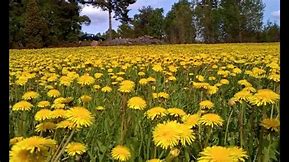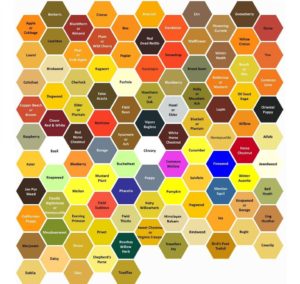Flowering Plants for Honey Bees

Honey bees seek plants that produce flowers that provide pollen and nectar. There are literally thousands of lists that can be obtained from searching the internet to help you determine which flowers and at what time of the year the bees will have access to these food sources. It is widely known that having a “floral abundance is one of the strongest ways to promote bee diversity in gardens” said Gail Langellotto, the statewide coordinator for the Oregon State University Extension Service’s Master Gardener program. “Also, bees forage better for nectar and pollen in warm, sunny spots.”
I have found that because there are literally hundreds of sources of information available that it quickly becomes overwhelming when trying to make a decision about which plants to introduce into your garden to transform your backyard into a honey bee haven. This knowledge is found in books, magazines, publications, organization libraries , public libraries, and the internet. There are lists available for each season. There are lists available for annuals, perennials, and herbs. There is a list of fruit and nut trees, and shrubs. Every back yard is unique. There are soil types to consider, water and watering needs to think about, and of course the amount of sunlight vs shade in your garden. There are also lists for recommended native plants for home gardens in Western Oregon. I picked up a list at a garden show that identifies plants for pollinators by season for continuous bloom. Just an odd, off-the-wall observation I have made for all of these lists and charts are: NONE of them have included the “weed” category. Weeds are often the honey bees’ “go to” choice. For example: dandelion, purple dead nettle, self heal, and speedwell all come up in the spring time and take over the well manicured garden. (there are many more other weeds that provide the honey bee with pollen and nector) These are all first food sources for the honey bee. In an effort to simplify the selection I will list plants by category for the Southern Oregon area because Douglas County Bees is located in Southern Oregon.
Please keep in mind that this list is by no means complete as there are so very many plants that can be available that your honey bee colony would be agreeable to having around and deem it perfectly happy to be living in your back yard.
Herbs: lavender, catmint, sage, cilantro, thme, fennel, borage, oregano, garlic chives, hairy mountain mint, valerian, lemon balm, pennyroyal, chamomile, yarrow, rosemary
Perennials: crocus, buttercup, aster, hollyhocks, anemone, snowdrops, geranium, columbine, oregon grape, seedum, russian sage
Annuals: calendula, sweet asylum, poppy, sunflower, zinnia, cleome, heliotrope, nasturtium
Vegetables: tomato, squash, pumpkin, artichoke, cucumber, pepper, peas
Fruits: blackberry, strawberry, raspberry, apple, cherry, pear, salmonberry, choke cherry, plum, peach, apricot, huckleberry, blueberry, elderberry, orange, lemon, lime, fig
Vines: wisteria, trumpet, honey suckle, clematis
Weeds: dandelion, self heal, speedwell, storkbill, queen anne’s lace, cranes bill, chickory, milkweed, clover
Trees and Bushes: lilac, pussywillow, escallonia, mock orange, madrone, dogwood,

For a special visual, downloadable list of bee-foraging plants please visit this link: https://www.spiritbee.com/wp-content/uploads/2019/08/Plants-for-Bees-1.pdf
This article is written by Beau Miakinkoff 4/4/2020
I originally became a honey bee keeper because I desired my vegetable garden to thrive and produce food so that I could preseve stores to feed us through the winter. I also have and tend to an herb garden. (I would not grow anything that I could not eat or use as medicine) After becoming a beekeeper, I fell in love with our honeybees. I was amazed and impressed at how the busy, hard working honeybees had made my vegetable garden triple in produce the very first season. I wanted to help them…you know, to do something beneficial for them in return for helping me grow so much food. I started adding flowering plants all round our propery. Southern Oregon is so hospitable to a wide variety of plants. It has been an adventure of trial and error in choosing which plants do best. I am at the point now that I have no more “sunny spots” on our property to add anything new. I am forced to shop for only shade loving flowering plants now. What a “problem” to have, indeed! But our bees are happy!
Filed under: Douglas County Bees


 Subscribe to the
Subscribe to the  Leave a
Leave a